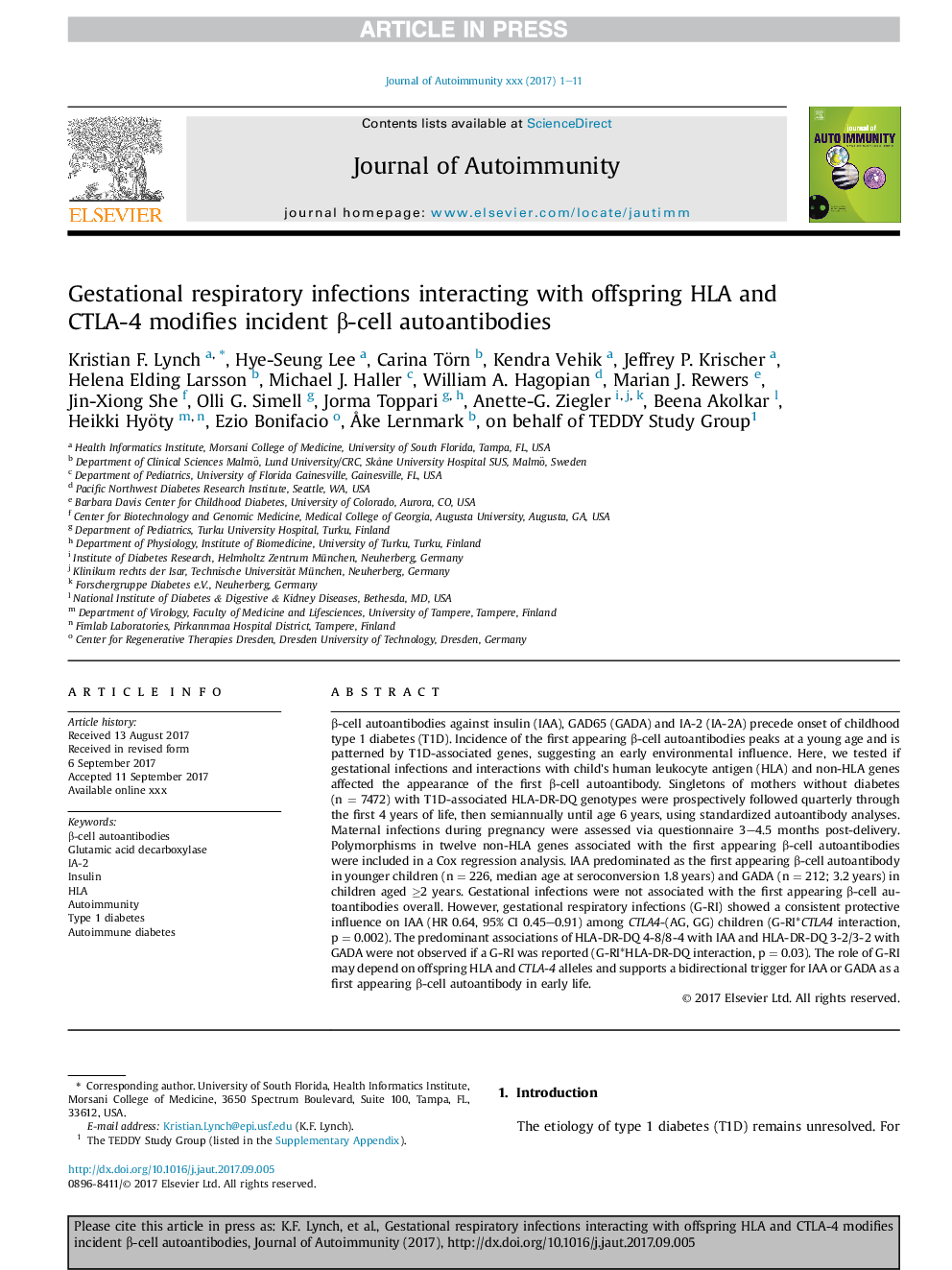| Article ID | Journal | Published Year | Pages | File Type |
|---|---|---|---|---|
| 8739599 | Journal of Autoimmunity | 2018 | 11 Pages |
Abstract
β-cell autoantibodies against insulin (IAA), GAD65 (GADA) and IA-2 (IA-2A) precede onset of childhood type 1 diabetes (T1D). Incidence of the first appearing β-cell autoantibodies peaks at a young age and is patterned by T1D-associated genes, suggesting an early environmental influence. Here, we tested if gestational infections and interactions with child's human leukocyte antigen (HLA) and non-HLA genes affected the appearance of the first β-cell autoantibody. Singletons of mothers without diabetes (n = 7472) with T1D-associated HLA-DR-DQ genotypes were prospectively followed quarterly through the first 4 years of life, then semiannually until age 6 years, using standardized autoantibody analyses. Maternal infections during pregnancy were assessed via questionnaire 3-4.5 months post-delivery. Polymorphisms in twelve non-HLA genes associated with the first appearing β-cell autoantibodies were included in a Cox regression analysis. IAA predominated as the first appearing β-cell autoantibody in younger children (n = 226, median age at seroconversion 1.8 years) and GADA (n = 212; 3.2 years) in children aged â¥2 years. Gestational infections were not associated with the first appearing β-cell autoantibodies overall. However, gestational respiratory infections (G-RI) showed a consistent protective influence on IAA (HR 0.64, 95% CI 0.45-0.91) among CTLA4-(AG, GG) children (G-RI*CTLA4 interaction, p = 0.002). The predominant associations of HLA-DR-DQ 4-8/8-4 with IAA and HLA-DR-DQ 3-2/3-2 with GADA were not observed if a G-RI was reported (G-RI*HLA-DR-DQ interaction, p = 0.03). The role of G-RI may depend on offspring HLA and CTLA-4 alleles and supports a bidirectional trigger for IAA or GADA as a first appearing β-cell autoantibody in early life.
Related Topics
Life Sciences
Immunology and Microbiology
Immunology
Authors
Kristian F. Lynch, Hye-Seung Lee, Carina Törn, Kendra Vehik, Jeffrey P. Krischer, Helena Elding Larsson, Michael J. Haller, William A. Hagopian, Marian J. Rewers, Jin-Xiong She, Olli G. Simell, Jorma Toppari, Anette-G. Ziegler, Beena Akolkar,
